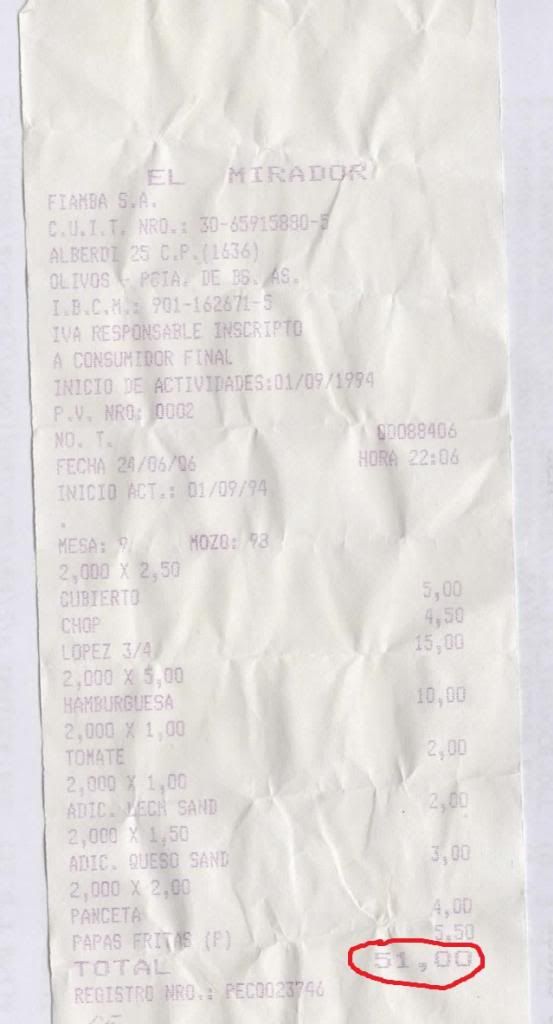John.St
Registered
- Joined
- Jul 18, 2009
- Messages
- 1,928
- Likes
- 1,020
Basket of 32 products which were found in all the 15 towns surveyed.
La Plata .... AR$ 344.10
Mar del Plata AR$ 354.73
Corrientes .. AR$ 362.02
Santa Rosa .. AR$ 367.49
Córdoba ..... AR$ 375.- (app. - based on 'slightly less than in BsAs')
Mendoza ..... AR$ 375.- (ditto)
Buenos Aires AR$ 379.75
Posadas ..... AR$ 392.25
Rosario ..... AR$ 410.53
Neuquén ..... AR$ 438.39
Rawson ...... AR$ 484.40
Top to bottom: +40.8%
One kg of tomatoes AR$ 6.50 in Santa Rosa, Tucumán and San Juan, contra AR$ 13.50 de Mendoza (but I paid only AR$ 8.00 yesterday), AR$ 14.40 in Catamarca and AR$ 16.20 in Rawson.
The difference was 122% for onions, 110% for potatoes, 96% for carrots, 88% for apples, oranges and bananas.
http://www.losandes....cias-710743.asp
La Plata .... AR$ 344.10
Mar del Plata AR$ 354.73
Corrientes .. AR$ 362.02
Santa Rosa .. AR$ 367.49
Córdoba ..... AR$ 375.- (app. - based on 'slightly less than in BsAs')
Mendoza ..... AR$ 375.- (ditto)
Buenos Aires AR$ 379.75
Posadas ..... AR$ 392.25
Rosario ..... AR$ 410.53
Neuquén ..... AR$ 438.39
Rawson ...... AR$ 484.40
Top to bottom: +40.8%
One kg of tomatoes AR$ 6.50 in Santa Rosa, Tucumán and San Juan, contra AR$ 13.50 de Mendoza (but I paid only AR$ 8.00 yesterday), AR$ 14.40 in Catamarca and AR$ 16.20 in Rawson.
The difference was 122% for onions, 110% for potatoes, 96% for carrots, 88% for apples, oranges and bananas.
http://www.losandes....cias-710743.asp

